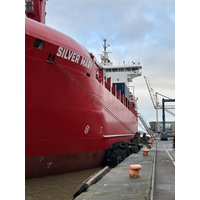
BAS Secures Antarctic Station Resupply for the Next Decade
costs. The arrangement gives BAS flexibility to increase calls when needed to support additional science projects at Halley VI station and achieves significantly better value than chartering vessels independently. The new logistics model also creates valuable capacity for the BAS-operated RRS Sir David Attenborough by removing the need for a dedicated, time-intensive, ship call to Halley, creating 40-60 days of ship time that can be dedicated to UK Research and Innovation (UKRI)-funded research cruises and science delivery elsewhere.Using one shared vessel instead of multiple national expeditions cuts

UK's Prince William Calls for Urgent Action to Protect Oceans
to come into force.William addressed Sunday's gathering in his role as founder of the Earthshot Prize, launched by the prince in 2020 with the aim of making huge strides to tackle environmental problems within a decade.On Saturday, William's office released a video of him talking to David Attenborough, one of the world's best-known nature broadcasters, about his latest documentary "Ocean" which examines the plight of the seas."The thing which I am appalled by, when I first saw the shots that were taken for this film are what we have done to the deep ocean floor,"

Citizens Urge EU to Better Manage Marine Protected Areas
in the UK, Germany and Spain at the end of last year.The petition reinforces poll results from last year that found that 82% of citizens across seven EU countries believe in stricter regulation of bottom trawling, and 73% would support banning bottom trawling in EU MPAs.It follows the release of David Attenborough’s film, Ocean, which shows previously unseen footage of bottom trawling.Ahead of the third UN Ocean Conference starting June 9 in France, when nations are expected to announce new commitments, particularly concerning MPAs, the world will be looking at the ambition of Commissioner Kadis&rsquo

Britlift Spreader Proves Value on Royal Research Ship
A modular spreader beam from Britlift is proving a success on the Royal Research Ship (RRS) Sir David Attenborough, one of the most advanced polar research vessels in the world.Operated by the British Antarctic Survey (BAS), this multidisciplinary research platform operates year-round, spending the northern summer in Arctic. During the southern hemisphere summer it is based in Antarctica where its duties include bringing people, equipment and supplies to BAS research stations. The 129m long vessel has a 50-tonne crane for loading and unloading good and equipment, which can include vehicles and plant
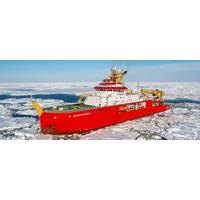
RRS Sir David Attenborough Begins Research Mission in the Southern Ocean
Scientists aboard Britain's high-tech polar research vessel RRS Sir David Attenborough are headed to the Weddell Sea to investigate how carbon dioxide moves and transforms in the Southern Ocean.The ship departed Tuesday from Punta Arenas, Chile for the 30-day scientific expedition.As the carbon in the seawater rises to the surface near Antarctica, it interacts with the atmosphere, ice, and microscopic plants and animals, called phytoplankton and zooplankton, near the ocean surface, before descending to the ocean depths. By understanding more about this process, the researchers hope to improve
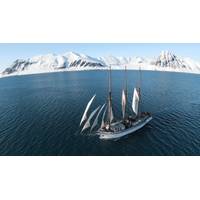
Scientists to Study the Arctic in a Wooden Schooner
the next few years.In addition to leading expeditions and training aspiring explorers, Jim is an extreme safety expert and has advised on some of the BBC’s most prestigious and award-winning natural history series, including Frozen Planet, and Human Planet working with luminaries such as Sir David Attenborough. Jim has also consulted on numerous expeditions including many of Sir Ranulph Fiennes’ expeditions
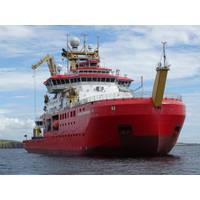
RRS Sir David Attenborough Gearing Up for First Antarctic Science Cruise
Britain's high-tech polar research ship RRS Sir David Attenborough is gearing up for its first Antarctic science cruise.Over the coming weeks, the crew and scientists on board the vessel will be carrying out a range of trials to test the ship's science equipment in both deep and shallow water around the Scottish coast. Among the tech to be tested are the vessel's moonpool, coring equipment and the ship’s workboat Erebus, all of which are critical elements of upcoming science missions.Erebus will be put through its paces with new equipment, including an A-frame, winch and upgraded
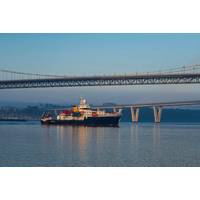
$56m Allocated to Refurbish Three British Research Ships
;s oceans.Babcock’s International Rosyth shipyard was recently awarded $56 million by the Natural Environment Research Council (NERC), part of UK Research and Innovation (UKRI) to maintain its fleet of scientific research vessels – including the RRS Discovery, RRS James Cook and RRS Sir David Attenborough. RRS Discovery will be the first to undergo a refit at Babcock’s Rosyth facility in Fife, Scotland.During this refit, RRS Discovery will be in drydock to allow the maintenance team access to clean the hull and propulsion equipment, which will help to lower fuel usage and increase overall
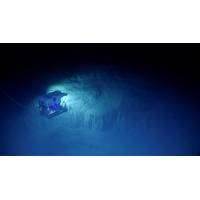
They Say We Know More About the Moon Than About the Deep Sea. They’re Wrong
We know more about the Moon than the deep sea.This idea has been repeated for decades by scientists and science communicators, including Sir David Attenborough in the 2001 documentary series The Blue Planet. More recently, in Blue Planet II (2017) and other sources, the Moon is replaced with Mars.As deep-sea scientists, we investigated this supposed “fact” and found it has no scientific basis. It is not true in any quantifiable way.So where does this curious idea come from?Mapping the deepThe earliest written record is in a 1954 article in the Journal of Navigation, in which oceanographer

 August 2025
August 2025





